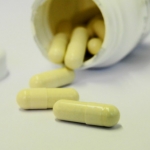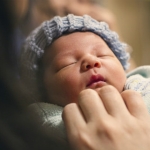Because rates of postpartum illness are very high in women with bipolar disorder, it is generally recommended that mothers continue treatment with a mood stabilizer throughout the postpartum period to reduce their risk of relapse; however, the use of medications during the postpartum period is complicated by the issue of breastfeeding. All medications are secreted into the breast milk, although their concentrations appear to vary (Chaudron and Jefferson, 2000).
One study of four mother-infant pairs reported lamotrigine levels in infant serum that were 20-43% of levels found in the mothers’ serum; in this study, infants were tested at 10 days of age and at two months (Liporace 2004). Unpublished preliminary research from Dr. Adele Viguera at the Center for Women’s Mental Health has found infant Lamictal levels ranging from 20-30% of the mothers’ serum concentrations in a sample of three nursing infants. Another study, reporting on nine breastfeeding mother-infant pairs, yielded similar results; infant serum levels ranged from 23 to 50% of levels found in the mothers’ serum (Ohman 2000). These higher than expected levels of lamotrigine in the infants may be explained by poor neonatal metabolism of lamotrigine. It was also noted that maternal serum levels of lamotrigine increased significantly after delivery, and this may have also contributed to the high drug levels seen in the nursing infants. Despite the relatively high levels of medication found in these infants, none of these studies reported any adverse events in the breastfeeding newborns.
One worry shared by clinicians and new mothers is the risk for Stevens-Johnson syndrome (SJS). This is a severe, potentially life-threatening rash, most commonly resulting from a hypersensitivity reaction to a medication, which occurs in about 0.1% of bipolar patients treated with lamotrigine (Goldsmith 2004). Thus far, there have been no reports of SJS in infants associated with exposure to lamotrigine. In fact, it appears that cases of drug-induced Stevens-Johnson syndrome are extremely rare in newborns. In a single case report, authors described a neonate developing the syndrome after exposure to the anticonvulsant phenobarbital (Oles and Gal 1982).
More research is required to assess the safety of lamotrigine in nursing infants, and decisions regarding the use of this drug in breastfeeding women involves a careful consideration of the risks and benefits of using this medication. For women with bipolar disorder, breastfeeding raises concerns for another reason. Nursing a young infant requires multiple feedings during the night. Sleep deprivation is destabilizing for those with bipolar disorder and may help to precipitate a relapse during this vulnerable time. Thus for women with bipolar disorder, we recommend that somebody else take over the nighttime feedings in order to protect the mother’s sleep and to increase her chances of staying well. For mothers who choose to breastfeed while taking lamotrigine (or any other mood stabilizer), the child should be monitored closely for signs of toxicity. Breastfeeding is usually avoided when the baby is premature or has signs of hepatic immaturity (hyperbilirubinemia), which may make it more difficult for the infant to metabolize the medication to which he or she is exposed. Premature babies are also probably more vulnerable to the toxic effects of these medications. Measurement of the mother’s and infant’s serum drug levels may be helpful when evaluating the extent of drug exposure.
Juliana Mogielnicki, BA
Ruta Nonacs, MD, PhD








Thank you for the information indeed!
Please let me know whether this information is still accurate — an update would be appreciated!!!
Thank you for this report. I have been taking Lamotrigine and Seroquel since about 2003. I had a son in Jan. 2005, and a son in May 2007. I took the lamotrigine during pregnancy and did not nurse. Both boys are doing well in school and at home. At first, I felt guilty I did not nurse. Your report makes me feel glad I did not nurse. My boys, 6 and 4 are well. Please let me know if there are updates on this medication’s side effects, such as memory loss or problems concentrating.
Thank you,
J A Lacy
@J A Lacy, Memory problems and difficulty concentrating are both listed as side effects of lamotrigine. They are more common at the higher doses.
Thanks for your comment.